
Manduca florestan, the Florestan sphinx, is a moth of the family Sphingidae. The species was first described by Caspar Stoll in 1782.
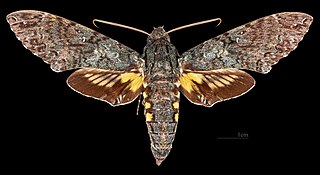
Amphonyx duponchel, or Duponchel's sphinx, is a moth of the family Sphingidae. The species was first described by Felipe Poey in 1832.

Adhemarius dariensis is a species of moth in the family Sphingidae. It is known from Costa Rica, Mexico, Nicaragua and Panama.
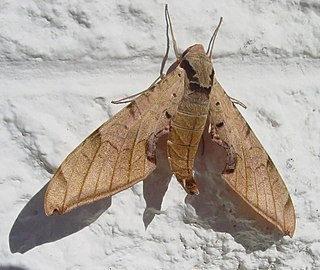
Protambulyx strigilis, the streaked sphinx, is a moth of the family Sphingidae prevalent in the Americas from Florida to Central and South America. The species was first described by Carl Linnaeus in 1771.

Adhemarius gannascus is a moth of the family Sphingidae first described by Caspar Stoll in 1790.

Eumorpha capronnieri is a moth of the family Sphingidae first described by Jean Baptiste Boisduval in 1875.

Eumorpha satellitia, the satellite sphinx, is a moth of the family Sphingidae. The family was first described by Carl Linnaeus in 1771. It lives from Brazil and northern Argentina north through Central America, Mexico, and the West Indies to south Texas and southern Arizona.

Eumorpha vitis, known as the vine sphinx, is a moth of the family Sphingidae.

Xylophanes anubus is a moth of the family Sphingidae first described by Pieter Cramer in 1777.

Xylophanes ceratomioides is a moth of the family Sphingidae. It is known from Mexico, Belize, Costa Rica, French Guiana, Bolivia, Argentina and Venezuela, down into southern Brazil. Rare vagrants have been found up to southern Arizona.
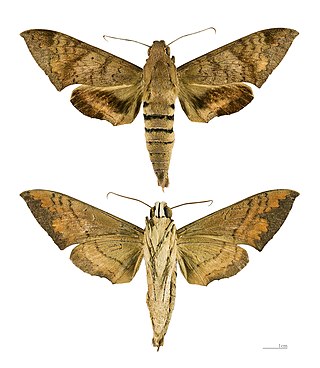
Pachylioides is a monotypic moth genus in the family Sphingidae erected by Ronald W. Hodges in 1971. Its only species, Pachylioides resumens, was first described by Francis Walker in 1856.

Adhemarius palmeri is a moth of the family Sphingidae first described by Jean Baptiste Boisduval in 1875.

Callionima parce, the parce sphinx moth, is a species of moth in the family Sphingidae.It was originally described by Johan Christian Fabricius in 1775.
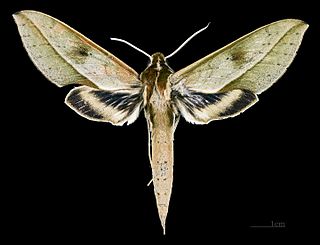
Xylophanes cyrene is a moth of the family Sphingidae first described by Herbert Druce in 1881. It is found in Mexico, Panama, Costa Rica, Guatemala, Belize and south to Oxapampa in Peru.
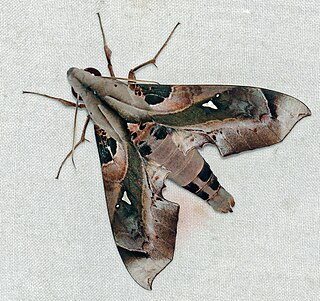
Madoryx plutonius is a moth of the family Sphingidae.

Eumorpha obliquus is a moth of the family Sphingidae. It is found from Belize, Guatemala, Nicaragua and Costa Rica south to Bolivia. It is also present in Brazil and Guadeloupe.
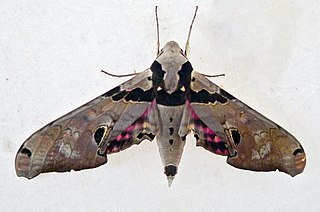
Adhemarius dentoni is a species of moth in the family Sphingidae. It was described by Benjamin Preston Clark in 1916.

Adhemarius eurysthenes is a species of moth in the family Sphingidae. It was described by Rudolf Felder in 1874, and is known from Brazil, Colombia and Paraguay.

Adhemarius gagarini is a species of moth in the family Sphingidae. It was described by Jose Francisco Zikán in 1935,

Adhemarius sexoculata is a species of moth in the family Sphingidae. It was described by Augustus Radcliffe Grote in 1865,
























